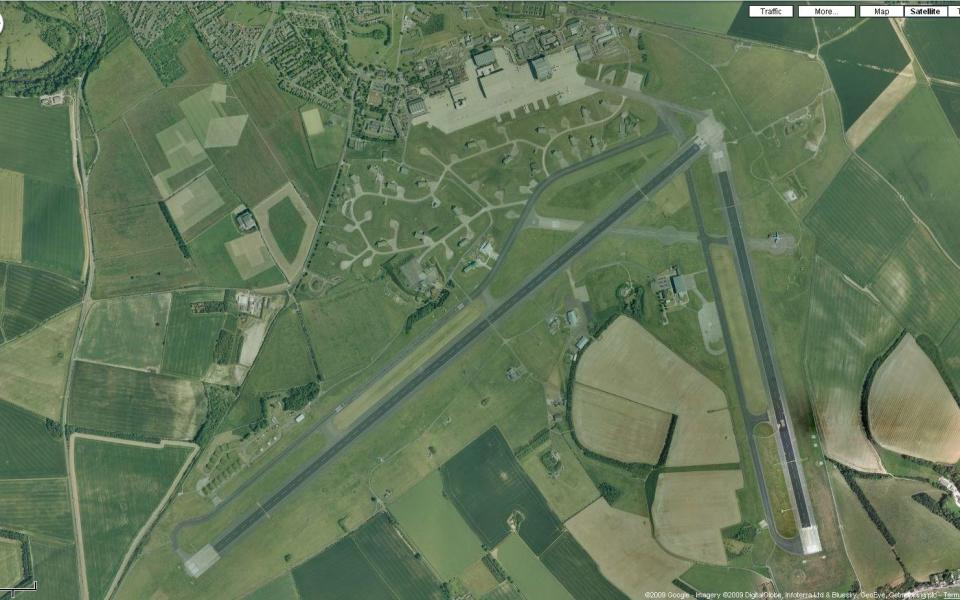A British-built, unstoppable quantum navigation system has been flown and operated on an aircraft for the first time.
The breakthrough comes amid a growing threat from satellite jammers that hinder the operation of traditional GPS on both civilian and military aircraft.
Current navigation methods rely on satellites for navigation and this is susceptible to hacking attempts or technological interference, crippling existing guidance systems.
Quantum, however, is a self-contained system that can navigate without depending on any external infrastructure.
Politicians and officials have become acutely aware of the risk posed by GPS blocking in the wake of Russia’s invasion of Ukraine and a wave of electronic warfare.
Grant Shapps, the Defense Secretary, recently had his RAF jet’s navigation system tampered with by a foreign state, believed to be Russia.

The world first, demonstrated at Boscombe Down, raises hopes that Britain can meet its target of protecting British aircraft from GPS jamming by 2030, thanks to quantum-powered backup systems.
A Whitehall source told The Telegraph that GPS jamming on civilian aircraft is relatively rare, but that “the world around us continues to present evolving threats”.
“By building advanced safe navigation systems that effectively eliminate the risks of GPS interference, we are ensuring that British aircraft can travel safely and without interference,” she added.
Quantum navigation, unlike GPS, can determine speed and duration – and therefore position – by using the properties of ultracold atoms.
Scientists have been trying to translate the theory into deployable technologies for several years, but the complicated systems are delicate and have never before been used outside a laboratory.
A UK project, backed by £8 million in government funding, has achieved this for the first time ever in a commercial environment.
Andrew Griffith, the Science Secretary, told The Telegraph during an exclusive test flight on the plane that there has been a “quantum acceleration” due to current geopolitical tensions as countries try to protect themselves from GPS vulnerabilities.
“This is a real world problem,” he said. “We are seeing car thieves at the lowest level using jammers, but we have also seen the Secretary of State’s RAF aircraft being obstructed by other state actors.
“There is now a lot of danger of dependence on a single source of the GPS system. What’s really exciting today is leaving the laboratory and entering a real environment.
“There is more interest, more capital, more innovation and more clarity from the government about the importance of quantum.
“You could say that quantum has until now been the least well understood of the five pillars of the Science and Technology framework, but today it is the coming out of quantum.”
The groundbreaking system, built in Oxford by Infleqtion, was tested for eight hours on a customized Avro RJ100 operated by QinetiQ at the defense base at Boscombe Down, near Salisbury.


Half of the aircraft’s cabin space was dedicated to racks equipped with the latest technology.
During the latest test flight, The Telegraph saw two racks, about four feet high, containing the lasers, atoms and wires needed to make the quantum navigation technology work.
Experts said it could fit into a single rack and will soon be further miniaturized for future large-scale commercial deployment.
QinetiQ, which was also part of the consortium that created the DragonFire laser drone defense system to be fitted to naval vessels, manages the Boscombe Down site and the chief test pilot was in charge of the flight, which carried out a series of aerial maneuvers to enable the new navigation to make. system to the test.
A team of physicists and aeronautical engineers on board provided the quantum navigation system and an onboard quantum clock the size of a record player.
The first few tests of the quantum navigation equipment did not work because the vibrations from the plane’s engines, as well as a host of other noise-inducing factors, prevented the process from working properly.
But after stripping the system to its bare bones and rebuilding it more robustly, the system worked as expected.
Quantum navigation works by using an array of lasers to cool a cloud of rubidium atoms to a fraction above absolute zero (-273°C). A hundred million atoms, weighing only a billionth of a billionth of a gram, contain no energy and no longer behave like normal particles. At these cold temperatures, the cloud does not become a solid, liquid or gas, but another state of matter known as a Bose-Einstein condensate.
This special substance behaves both like a wave and a particle, because the cold brings out the quantum properties of the atoms.
Lasers split the cloud of atoms and each entity then travels independently before recombining. The way these interact can then be analyzed to reveal speed, distance and position.
The Bose-Einstein condensate is the fifth state of matter that was first theorized 100 years ago and only created in a laboratory for the first time in the 1990s.
Dr. Keshav Thirumalai, head of the inertial portfolio at Infleqtion, told The Telegraph while 35,000 feet over Wiltshire: “Based on that interference pattern you can infer the aircraft’s position.
“To make this all work so far is a fantastic achievement,” he added.
The next step is to combine the working quantum mechanism with data from the aircraft itself to generate navigable information.
Henry White, the chief technologist (sensing) at BAE Systems, which is part of the consortium that created the technology, said: “Now that this demonstration has shown that the BEC remains stable in flight, the next step is to carry out that navigation function, which allows us to use this as standard equipment during navigation.
“Investing at this early stage has helped cement Britain’s position as a leader in quantum technology, achieving a world first with this flight demonstration.”